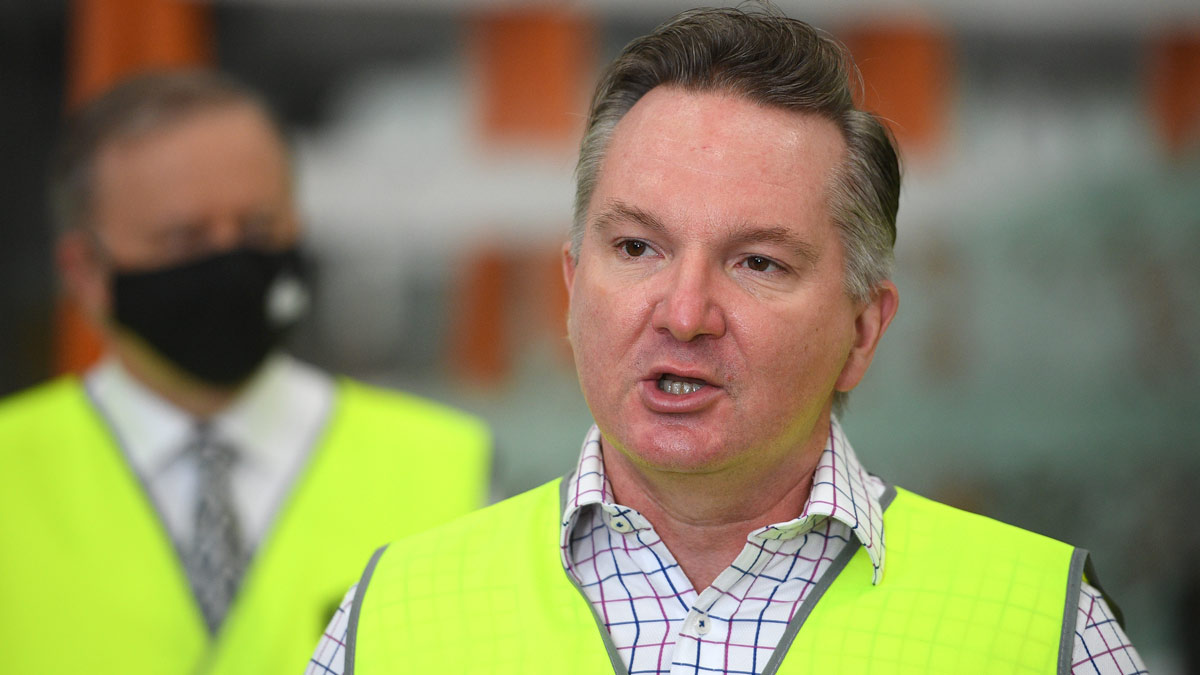Federal Labor will back the construction of a new gas fired power station in Kurri Kurri – a $600 million project being pushed by the Morrison government – with the condition that the plant is switched to run on green hydrogen.
The Morrison government has tasked the government-owned Snowy Hydro with constructing the 660MW plant in the Hunter region, a project that critics say is expensive, and an unnecessary intervention into the electricity market.
Federal energy minister Angus Taylor insists the dispatchable capacity is necessary to maintain ‘affordable and reliable’ supplies of electricity. But the government was forced to turn to Snowy Hydro to undertake the project after the private market refused to do so.
Labor had initially criticised the project, which according to Snowy Hydro’s own project plans, will have the ability to generate electricity only for short periods, and Labor’s energy spokesperson Chris Bowen previously described the project as not being justified by the “economics or the engineering”.
But at a press conference in Kurri Kurri on Tuesday, Labor leader Anthony Albanese said Labor had changed its stance on the project and will instead support it, and will even pump more money into it.
The major condition is that the plant be converted to run on 30 per cent renewable hydrogen at least initially and with plans to convert the plant to 100 per cent green hydrogen “as soon as possible”.
Albanese said this approach would work to address some of the flaws in the planned power station, and that Labor would be willing to make a further equity injection into Snowy Hydro to fund the hydrogen conversion.
“It takes a flawed approach and make it work by ensuring that the Kurri Kurri plant can stay open, run by gas, but with 30 per cent green hydrogen from the beginning, but working up to being powered by green hydrogen in the future. We’ll work with Snowy to make sure that that occurs,” Albanese said.
“The government’s proposal is a flawed project. What we need to do is to make it a project that provides sustainable jobs, that provides job security and energy security.”
Labor insists the proposal is consistent with net zero emissions by 2050, as well as its commitment to a 43 per cent cut in emissions by 2030.
Business case documents published by Snowy Hydro show that the proposed gas generator may only operate at the equivalent of just 2 per cent of its potential capacity – amounting to just a few days in the year – and would be reliant on periods of very high wholesale electricity prices to be financially viable.
Additional planning documentation suggests that the plant may only be able to operate for up to 10-hours at a time – due to constraints on the amount of gas that can be supplied to the Kurri Kurri site, and that it would likely operate on diesel fuel for its first six months.
It raises questions about the ability of a Kurri Kurri gas generator to actually contribute to lower electricity prices and whether the construction of a big battery may better serve consumers.
Energy market analyst Bruce Robertson, from the Institute for Energy Economics and Financial Analysis, said Labor’s decision to support the Kurri Kurri project – which involves the investment of $600 million of public funding – would ultimately lead to higher electricity prices.
“This project is poorly located on a gas line that cannot even supply it with sufficient gas and is now proposed to be powered by hydrogen, a technology that’s unproven and whose costs are unknown,” Robertson said.
“The electricity market doesn’t even need the Kurri Kurri gas-fired power station, as sufficient capacity has already been added to replace the closure of the Liddell coal power station.”
“Make no mistake this is a decision based purely on politics and is not in the best interests of the Australian people. If the Labor Party wants to support the nascent hydrogen industry, it would be better to do so first on a smaller scale, to see if it works and can be scaled up,” Robertson added.
Bowen, said that Labor’s condition that the plant be fuelled by renewable hydrogen would help the Hunter region seize an opportunity to develop renewable hydrogen capacity while ensuring the investment would remain viable under efforts to cut Australia’s greenhouse gas emissions.
“What we’re doing today is ensuring that Kurri Kurri is at the centre of the hydrogen revolution, which is about to take place right around the world,” Bowen said.
“We want to see Kurri Kurri leading Australia’s involvement in that revolution. Green hydrogen is a way that we can generate and store renewable energy. And we can power Australia from the regions like the Hunter Valley.
“Now, we’ve always said the Government’s proposal, as Albo indicated, didn’t stack up economically and didn’t stack up environmentally. But our proposal stacks up environmentally. It’s consistent with our commitment to net zero by 2050. And it stacks up economically because it’s an investment which will last.”
But the coordinator of the Gas Free Hunter Alliance, Fiona Lee, said it would be better for governments to focus their support on renewable energy technologies.
“While we welcome Labor’s commitment to renewables and providing future focussed jobs in the Hunter, the Gas Free Hunter Alliance believes not a single cent of public money should be spent subsidising a new fossil fuel project in Kurri Kurri. Any power station that burns more fossil fuels like gas is just worsening climate change,” Lee said.
“You don’t get to transition away from fossil fuels by spending more money on them. We want to see the $600 million of public money spent supporting and retraining workers, not a dirty gas plant that will need expensive upgrades in a few short years.”








